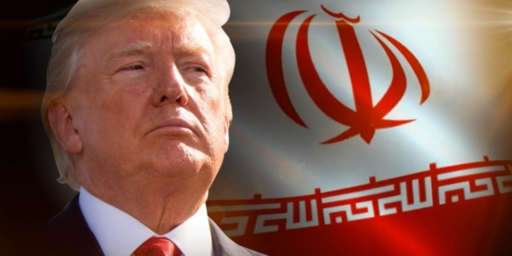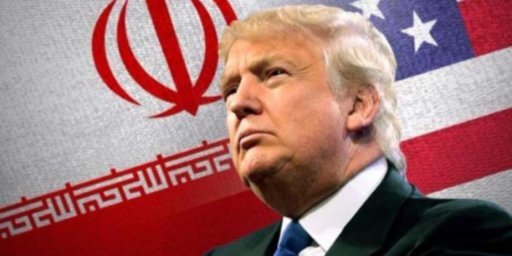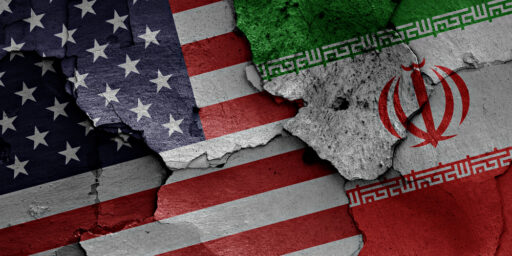The Iranian Weapons Myth
One consistent meme that has popped up during the War in Iraq is the idea that the government of Iran is actually arming Shi’ite militias so that they can fight American soliders. As it turns out, though, there’s not a lot of evidence for this proposition.
Last April, top George W. Bush administration officials, desperate to exploit any possible crack in the close relationship between the Nouri al-Maliki government and Iran, launched a new round of charges that Iran had stepped up covert arms assistance to Shi’a militias.
Secretary of Defence Robert M. Gates suggested that there was “some sense of an increased level of [Iranian] supply of weapons and support to these groups.” And Washington Post reporter Karen DeYoung was told by military officials that the “plentiful, high quality weaponry” the militia was then using in Basra was “recently manufactured in Iran”.
But a U.S. military task force had been passing on data to the Multi-National Force Iraq (MNFI) command that told a very different story. The data collected by the task force in the previous six weeks showed that relatively few of the weapons found in Shi’a militia caches were manufactured in Iran.
The most likely culprit for Iranian arms being found in Iraq, as it turns out, are arms dealers, not the Iranian government. The article is worth reading in full.
(link via Matthew Yglesias)






I think that “myth” is a bit strong. In the case of weapons of Iranian manufacture it’s not unreasonable to assume that trade in many weapons classes couldn’t be carried on without at least the tacit approval of the Iranian government.
“Myth” is not only too strong, it’s revisionist and irresponsible. In addition, there is a large amount of “evidence for this proposition.” You should retract your characterization, instead of doing yeoman’s work for a certain narrative.
First, the article is citing a study using data from a certain time period:
As publicly noted by many senior US military officials at the time, the quantity of EFPs, etc., significantly and drastically dropped off around the same time violence started declining (Summer-Fall 2007). Whether this was due to targeted US interdiction of Iranian ratlines or a deal the Iranians made with players in Iraq, it happened, and US military officials at the time noted its surprising, rapid decline.
A couple of other random data points: the US military has specifically interdicted EFPs and rockets being imported from Iran, and 9 Quods Forces operators were arrested just in the past month coming into the country. (There are many more data points of this nature)
EFP technology was initially imported from Iran – its use is limited in captures and geographic area corresponding with Shia militias, and Mahdi militiamen have gone on record with the LA Times indicating that they were receiving assistance from Iran.
Subsequently, EFP factories have been found in Iraq. By the logic of this post and article, does that mean that the technology and know-how didn’t come from Iran because they were subsequently manufactured in-country? Is it a “myth” being made up by the military, because small proportions were found in sweeps post Jan 2008, 5 months after US officials were noting staggering declines in EFP cache finds and attacks?
As to the proportion of weapons with Iranian manufacturing stamps on them, in isolation, this only reveals that a certain proportion of Iranian-manufactured weapons were in Iraq (during the timeframe of the analysis).
Drawing the conclusion that all arms supplied by Qods Forces to Shia militias in Iraq will necessarily be hot from an Iranian weapons factory is an assumption. Qods can very well be savvy enough (as Western intelligence services) to mix up the supply to avoid generating casus belli against Iran (not that evidence of Iranian weapons would generate casus belli, at this point).
Extrapolating this to deny the fact that Iran has been funneling men, know-how and material into the country is a rather large mistake. Debate the quantity – but beyond that such any sweeping denial is objectively incorrect:
http://www.longwarjournal.org/archives/2007/12/irans_ramazan_corps.php
How many of these weapons were manufactured somewhere other than Iran but came through Iran to the insurgents? The story only addresses weapons manufactured in Iran. What a bunch of hooey. We should expect such a twisting of words and facts from a source such as IPS. It doesn’t matter where they are made, it matters who is supplying them to the insurgents. The story does not debunk any “myth”.
The ‘Iranian-backed militias’ in Iraq are otherwise known as the government of Iraq. They get their weapons largely courtesy of the USA.
I find this quote hyperbolic and not particularly accurate. But it’s still 1000x more arguable than the title of this post.